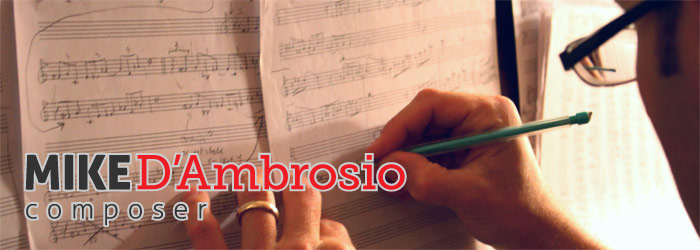

Duration: 8’30”
Full OrchestraInstrumentation: 2 fl (pic), 2 ob (EH), 2 cl (bass cl), 2 fg, 4 hn, 3 tpt (C), 3 tbn, 1 tba, timp, 3 perc, hp, strings
For a live recording, click here to go to soundcloud.
I started composing Compromise! in January 2017 while an artist-in-residence at Ragdale, an interdisciplinary artist community outside of Chicago. For the most part, it was just me, a piano, and a lot of time to observe and think about my beloved United States of America, which seemed much less united at that time. There were/are a lot of dissatisfied Americans, and I believe much of that comes from the degradation of the process by which our politicians approach and solve problems. For many, the word ‘compromise’ indicates weakness or lack of principle, but this is a dangerous position. Like a good marriage, our country will need compromise in order to find the best solutions and achieve the best long-term results. I hope you will pardon my idealism here, but I would like to ask our elected to officials to Compromise!, and perhaps more importantly, encourage the rest of us to communicate with them that compromise is something that we value. Otherwise, the biggest losers will always be us.
I typically avoid writing notes that attempt to describe the music using words. After all, the music describes itself more accurately and more interestingly. That said, describing the beginning of Compromise! should help a listener understand how the title is related and what the music is doing beneath the surface. The piece begins with a slow, delicate chord progression in the violins with some support from the harp and woodwinds. When studying musical form, we assign letters to each new musical idea presented in a piece of music, so this gentle opening is the A idea. The soft beginning is abruptly followed by a completely contrasting B idea. Loud, bombastic, and aggressive, this new music comes sweeping in with no smooth transition from the previous music. One need not hear this music in any kind of political way; in the beautiful abstract world of music, these two short musical ideas are simply meant to represent contrast. They do not interact with each other in any meaningful way at first, but when the A music makes its second appearance, it tries a little harder this time. The chord progression from the beginning is expanded and a cello melody is added. Furthermore, as that music winds down, a bass clarinet solo ushers in a transition section to more smoothly introduce the second presentation of B. Similarly, the B section is varied and expanded, which eventually blossoms and allows a new section C to emerge. That section is longer than the others but you will hear, after a kind of drum roll, the return of section A dressed up completely differently—with the violin chords from the opening played loudly by the brass section and supported by the entire orchestra. As you will notice, the beginning ideas, initially as different as possible, gradually interact with each other and develop over the course of the whole piece. There is even a moment near the end where I combined the A and B ideas together into one strong musical statement…because this is the story I want to tell right now.
Contact the composer directly to inquire about score/parts: mikedambrosio@gmail.com
Racer One (2013)
Peter's Cave (2007)
Eagle at Woodland Mound (2004)
Milligan's Wake (2003)Chamber Music for Larger Ensembles

home | top | email